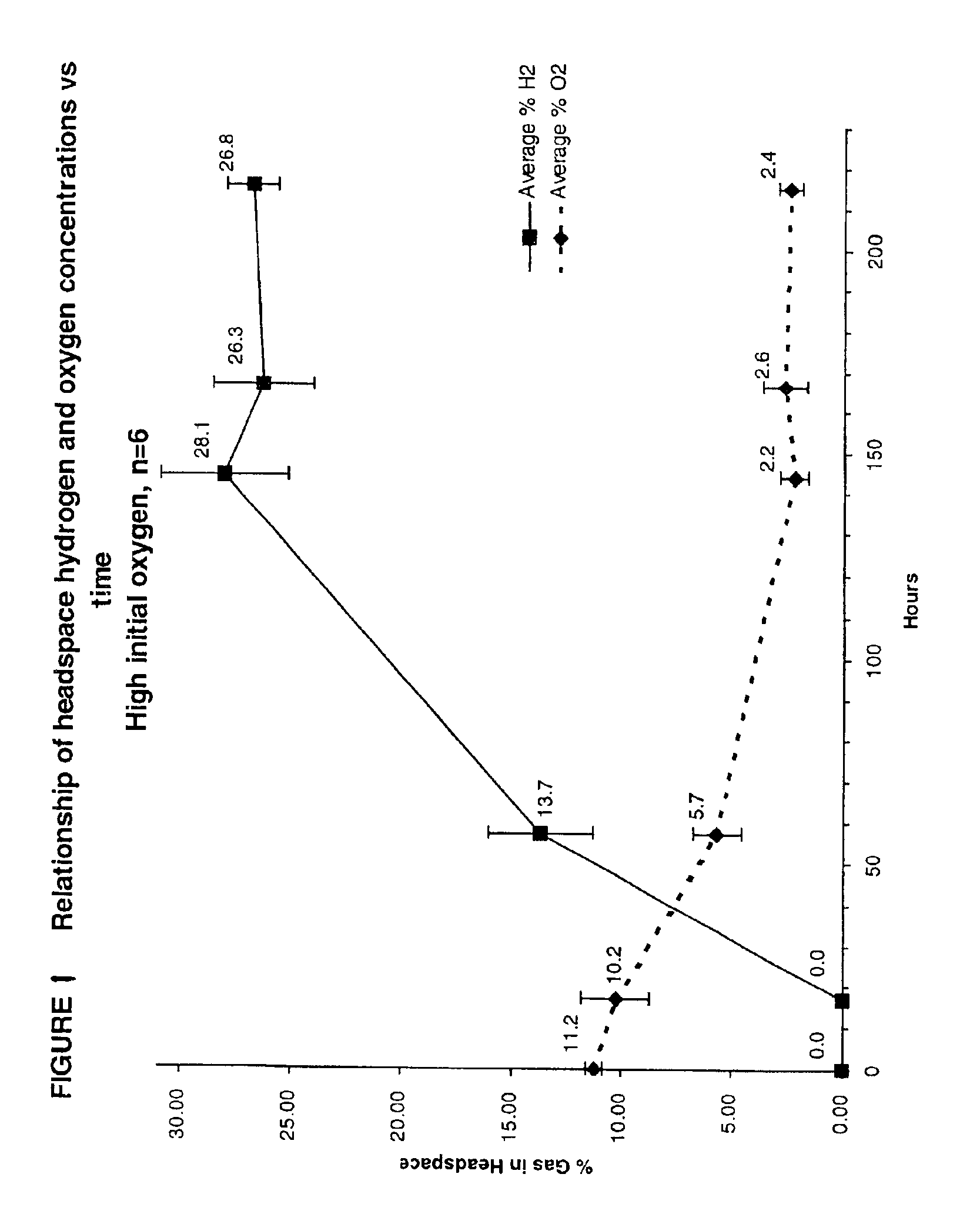Process for generation of hydrogen gas from various feedstocks using thermophilic bacteria
- Summary
- Abstract
- Description
- Claims
- Application Information
AI Technical Summary
Benefits of technology
Problems solved by technology
Method used
Image
Examples
example 1
[0095]The thermophilic bacteria, Thermotoga neapolitana (ATCC 49049, DSMZ4359 from Naples) was placed in a sealed container along with the medium described above, at the strength indicated above, pH 8.5, and with soluble starch as the feedstock. The container had 50 ml of liquor with a headspace of 110 ml, consisting initially of nitrogen gas with 5-12% oxygen gas. The hydrogen gas production in the headspace may be described as follows: (1) a cumulative H2 production of 24.4 ml (in 110 ml of available headspace) in 85 hours of incubation; (2) a cumulative H2 production rate of 2.61 ml / l-hour; and a calculated H2 concentration of 221 ml / l. This production assumes that the feedstock was not rate-limiting and that the tests started when the sterile medium was inoculated.
example 2
[0096]A thermophilic bacteria, Thermotoga neapolitana (ATCC 49049, DSMZ 4359 from Naples), was placed in a sealed container along with a physiologically buffered solution of the medium described above, at the concentration noted, with a pH of 8.0, and with soluble starch as the feedstock. There was 50 ml of liquor with a headspace of 110 ml consisting initially of nitrogen gas with 5-12% oxygen gas. The hydrogen gas production can be described as follows: (1) a cumulative H2 production of at least 33.7 ml (in 110 ml of available headspace) in 74 hours; (2) a cumulative H2 production rate of at least 4.14 ml / l-hour; and (3) a calculated H2 concentration of 306 ml / l. This production assumes that the feedstock was not rate-limiting and that the tests started when the sterile medium was inoculated.
example 3
[0097]A thermophilic bacteria, Petrotoga mobilis (DSMZ 10674), was placed in a sealed container along with the medium described above at double strength with a pH of 6.0 and cellobiose as the feedstock. There was 50 ml of liquor with a headspace of 110 ml consisting initially of nitrogen gas with 5-15% oxygen gas. The hydrogen gas production can be described as follows: (1) a cumulative H2 production of 15.5 ml (in 110 ml of available headspace) in 248 hours; (2) a cumulative H2 production rate of 0.567 ml / l-hour; and (3) a calculated H2 concentration of 140 ml / l. This production assumes that the feedstock was not rate-limiting and that the tests started when the sterile medium was inoculated.
PUM
 Login to View More
Login to View More Abstract
Description
Claims
Application Information
 Login to View More
Login to View More - R&D
- Intellectual Property
- Life Sciences
- Materials
- Tech Scout
- Unparalleled Data Quality
- Higher Quality Content
- 60% Fewer Hallucinations
Browse by: Latest US Patents, China's latest patents, Technical Efficacy Thesaurus, Application Domain, Technology Topic, Popular Technical Reports.
© 2025 PatSnap. All rights reserved.Legal|Privacy policy|Modern Slavery Act Transparency Statement|Sitemap|About US| Contact US: help@patsnap.com


